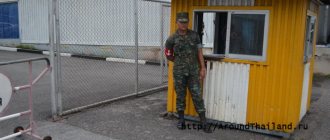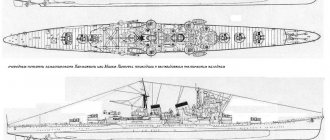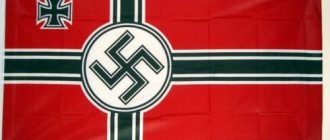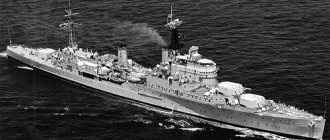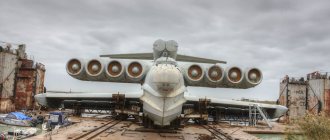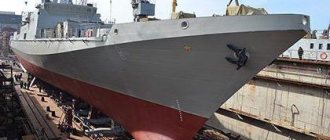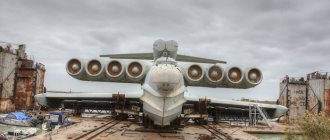From the history
So what is a frigate? Previously, it was a warship with three masts and a full sail rig. It had one or two closed or open decks with guns. The difference between a frigate and linear sailing ships was its smaller size and artillery armament. These vessels were intended for cruising service or long-range reconnaissance. Thus, they were used both in the interests of the battle fleet and in combat operations to destroy or capture merchant ships. Frigates can be considered as the ancestors of modern cruisers.
Frigates
Frigates are the smallest class of the three main classes of surface combatant (surface combat ship) and perhaps the smallest “blue-water”, that is, ocean-going warship.
Initially, a frigate was a ship that had a long and low design. Some long, fast battleships were called "frigate-built". It was a fully equipped ship with a single dedicated gun deck. Frigates had a minimal set of weapons, were usually used for reconnaissance, patrolling, escorting large ships, sometimes acted independently and were even called cruisers.
Having received armor and turret guns, the frigate became a cruiser, since there was no longer a “gun deck” that determined the characteristics of the frigate. The term "frigate" disappeared around the late 1800s and did not appear until World War II
The British needed a ship to escort the convoy. Destroyers served much the same role as frigates in the era of sail, but ocean-going destroyers were relatively fast and carried torpedoes. Patrol boats were not fast enough and did not have the range or seaworthiness to escort convoys and protect them from submarines. A mid-class BNK was created that was not as fast or well-armed as destroyers (not armed against submarines or aircraft), but still moved faster than convoy ships. It was larger than patrol boats to carry more fuel and withstand rough ocean weather and waves. The British reworked the term "frigate" to define this new class of ship.
New time
What is a frigate nowadays? This is a combat vessel with a displacement of three to six thousand tons, which is equipped with guided missile weapons. The main purpose of the ships is to fight underwater and air enemies while escorting the main forces or important convoys. A frigate is a universal escort vessel that can operate at any distance from the shore. This definition was given in 1975 by NATO classification.
In practice, the number of tasks of a ship of this class is much larger: from patrolling in open areas and coastal zones to participating in wars as fire support for ground forces. This should also include displaying the flag, military campaigns, participation in search and rescue operations, as well as exercises.
Content
- 1 Harsh reality 1.1 The first frigates
- 1.2 Classic sailing frigates 1.2.1 Heavy frigates
- 1.3.1 Steam frigates and screw frigates
- 1.4.1 World War II
- 2.1 Literature
Ship Features
The meaning of the word "frigate" in naval engineering implies compromise. After all, this modest combat vessel can become a kind of “superhero”. The point of the appearance of frigates is to save money in exchange for mass production. The specific nature of patrol and escort tasks implies a dispersion of forces. This requires reducing the cost of ships. Therefore, their combat abilities are sacrificed for economy. In order not to go beyond the budget, engineers have to reduce the weapon complex and abandon many radio electronics systems. They replace full-fledged sonar systems and radars with analogues with significantly degraded characteristics.
Too dense a layout and small dimensions have a bad effect on the survivability of the vessel. It has long become clear that modern frigates are not combat-ready ships that only pretend to be warships. The US military was able to verify this when their frigate was unable to repel an attack by one Iraqi military aircraft. He received two missiles on board and almost sank. 37 sailors were injured. Thus, the Americans flatly abandoned the further production of frigate-class ships. The reviews, so to speak, are not very good.
It turned out to be impossible to accommodate all the necessary weapons and systems in such a small building. In order for all the characteristics to be at an acceptable level, a destroyer with a displacement of at least 8 thousand tons is required.
The best frigates of our time
A frigate is a warship with a displacement of 3000...6000 tons, equipped with guided missile weapons. The main purpose is to fight air and submarine enemies while accompanying the main forces of the fleet and especially important convoys. A universal escort ship capable of operating at any distance from the coast. This is exactly the definition for a frigate given by the 1975 NATO classification.
In practice, the missions of a frigate-class ship are much broader - from performing patrol missions in the coastal zone and open sea areas to limited participation in local wars (blockade and release of sea communications, conducting “targeted” landings, symbolic fire support for ground troops). Combat campaigns, flag demonstrations, participation in international maritime exercises and search and rescue operations.
A frigate is always a compromise ; a modest warship can a priori become a “super hero”. The meaning of the appearance of frigates is savings in exchange for mass production. The specific nature of patrol and escort missions implies the dispersal of forces, which, in turn, entails a requirement to reduce the cost of ships - their combat capabilities are sacrificed for savings. In order to meet the budget, the frigate’s creators are forced to reduce the ship’s armament complex, abandon some radio-electronic systems, and replace full-fledged radars and hydroacoustic systems with “replicas” with reduced characteristics.
The extremely dense layout and small size negatively affect the survivability of the ship. For example, on the American frigates of the Oliver H. Perry type (a gigantic series of 71 units, including export and licensed assembly), a single-shaft power plant design was used - a risky solution that contradicts all the rules for designing warships.
The fact that any modern frigate is an uncombatable trough pretending to be a warship became clear a long time ago. The US Navy learned this first hand when the frigate Stark was unable to repel an attack by a single Iraqi Air Force aircraft. Having received two missiles on board, Stark almost died in the Persian Gulf. 37 sailors became victims of the incident.
Damage to the frigate USS Stark (FFG-31) sustained during the May 17, 1987 incident.
The British suffered even worse during the Falklands War - Her Majesty's unfortunate frigates, pretending to be destroyers for the sake of importance, were beaten by free-falling bombs from subsonic aircraft! A story worthy of World War II, but not 1982.
The Americans were so disappointed with the combat capabilities of frigates that, after experimenting with numerous Knoxes and Perrys, they completely abandoned the further construction of ships of this class. It turned out to be impossible to place all the necessary systems and weapons in a 4000-ton hull. To achieve acceptable characteristics (power, versatility, seaworthiness, high survivability, comfortable accommodation of personnel) a destroyer with a displacement of at least 8,000 tons is required.
As a result, for the last 20 years the Yankees have been building only large Aegis destroyers of the Orly Burke type. By 2013, 62 of them had already been riveted - more than frigates in all countries of the world combined. However, there is nothing to be surprised here - with 16 trillion in external debt, it is possible to build starships instead of destroyers.
Not to forget what a real warship looks like. USS Spruance (DDG-111)
Time makes its own adjustments - progress in microelectronics has made it possible to radically reduce the size of radio systems. The small size of the frigate turned out to be its advantage - with the use of stealth technology, the ESR of modern frigates was reduced to the value of the ESR of a torpedo boat. High technologies and composite materials, undoubted progress in engine construction, new weapon systems - all this has significantly increased the efficiency of small escort ships.
The frigate of the early 21st century has turned into a universal combat ship, capable of taking part in low-intensity military conflicts and performing almost the entire range of tasks facing the modern navy.
There is no doubt, all other things being equal, a frigate is inferior to a destroyer. But only the Pentagon has unlimited financial resources - shipbuilders in other countries have to compromise and create effective ships without wasteful expenses and with a minimum of necessary equipment. Let's see what happened.
Turkish gambit
Total displacement 4200 tons. Crew 220 people. Two General Electric LM2500 gas turbines accelerate the frigate to 30 knots. The fuel supply on board provides a cruising range of 5,000 miles at a cruising speed of 18 knots.
Armament: - Mk.13 beam-type launcher (8 Harpoon anti-ship missiles and 32 SM-1MR medium-range anti-aircraft missiles are stored in the below-deck magazine); - installation of vertical launch Mk.41 (ammunition - 32 RIM-162 ESSM anti-aircraft self-defense missiles); — artillery system OTO Melara 76 mm caliber; — anti-aircraft artillery self-defense complex “Phalanx” (six-barreled 20 mm caliber gun, radar and fire control system mounted on a single carriage); — anti-submarine system Mk.32 (two TAs, six small-sized torpedoes); — anti-submarine helicopter Sikorsky S-70 Seahawk.
Gaziantep F-490 - ex. American frigate Clifton Sprague (FFG-16)
A series of eight Turkish frigates of the G type. In fact, only the names here are Turkish - “Gaziantep”, “Giresun”, “Gemlik”... Otherwise, these are purely American ships - obsolete frigates of the "Oliver Hazard Perry" type (series with a "short" "corps), transferred to the Turkish Navy after 15 years of service under the Stars and Stripes.
The second important point is that Turkish G-type frigates are similar to their predecessors only externally - inside they are in many ways different ships, whose systems and weapons have undergone extensive modernization. Unlike the dull "Perry", the ship's air defense was seriously strengthened - in addition to the "one-armed bandit" (a humorous name for the Mk.13 launcher), 8 Mk.41 UVP cells appeared in the bow (a short, "defensive" version - like no matter how the Turks try to load a Tomahawk into it, they will not succeed). Only RIM-162 ESSM anti-aircraft missiles, 4 in each cell. However, there is an opinion that Türkiye has not received any ESSM. Instead of the promised Evolved Sea Sparrow Missle super-missiles, capable of maneuvering with a 50-fold overload and intercepting targets at a range of 50 km, the Turkish sailors were given the usual RIM-7 Sea Sparrow, with all the ensuing results.
Radio electronics have undergone no less serious changes. The frigates were equipped with a modern Turkish-made GENESIS combat information and control system (built, of course, with Chinese components). The frigates' electronic systems were integrated into the military tactical real-time data exchange network Link 16 (US and NATO standard). The Mk.92 fire control system was added; The hydroacoustic complex was updated. In addition, the frigates received an integrated ASIST helicopter landing and towing system.
Advantages of G-type frigates: - high autonomy; - impressive anti-aircraft ammunition.
Disadvantages of G-type frigates: - archaic design; - open air defense circuit (once this became fatal for the frigate Stark); — single-shaft power plant scheme.
Launch of a Standard-1 Medium Range anti-aircraft missile from an Oliver H. Perry-class frigate
Talwar
Total displacement 4000 tons. Crew 180 people. Two economical gas turbine engines, two afterburning gas turbine engines. Full speed 30 knots. Cruising range is 4850 miles at a cruising speed of 14 knots. The cost of one frigate is 500 million dollars.
Armament: - universal shipborne firing complex (UKSK) for 8 cells. Ammunition – cruise missiles of the Club-N family (export modification of the “Caliber”) and/or supersonic anti-ship missiles “Brahmos”; — SAM “Shtil-1” (single-beam launcher, 24 missiles); - 2 anti-aircraft missile and artillery systems 3R87E "Kashtan" (ammunition for both modules - 64 melee missiles + two twin six-barreled guns with a rotating barrel block); — universal gun AK-190, 100 mm caliber; - 12-barrel rocket launcher RBU-6000 (ammunition - 48 rocket depth charges) - two torpedo tubes with an ammunition load of 16 torpedoes; - Ka-28 anti-submarine helicopter.
A series of six Indian frigates built at Russian shipyards. The basis for the “Talvar” was Project 1135 “Burevestnik” - glorious patrol ships (BOD of the 2nd rank), mass-built for the USSR Navy in the 1970s (32 units in the series). “Burevestnik” turned out to be so successful that a whole family of frigates appeared on its basis - anti-submarine, border guard, export modifications.
New weapons and modern electronics “breathed life” into the old design - modification 1135.6 (Indian Talvar) became one of the most interesting frigates of the early 21st century: relatively simple, cheap and effective.
"Talwar" became an important stage in the history of the Indian Navy - Indian sailors for the first time received ships with vertical launchers in the space below deck. Modern multi-purpose frigates with universal weapons and elements to reduce radar signature (superstructure from side to side, tilting the upper part of the side “inward”, reducing the number of radio-contrast parts - the usual techniques of stealth technology). New BIUS “Requirement M”, three-dimensional radar “Fregat-M2EM” with a phased array antenna. One of the differences between the Talvar frigates and their European counterparts was the presence of a powerful strike weapons complex - an eight-round UKSK, cruise missiles for striking ground targets, supersonic anti-ship missiles - a tribute to the traditions of the Soviet Navy.
As practice has shown, the Talvar is far from the limit; the modernization potential of the old Burevestnik made it possible to create on its basis an even more formidable ship - Project 1135.6 R/M to equip the Russian Navy. Unlike the “Indians”, these ships will receive a full-fledged “Caliber” complex and an updated “Shtil-1” air defense system with under-deck air defense systems. Currently, there are three ships of this type at Russian shipyards, the lead frigate Admiral Grigorovich is planned to be launched in the summer of 2013.
Advantages of the Talvar frigates: - versatility; - strike weapons.
Disadvantages of the Talvar frigates: - single-boom launcher for the Shtil air defense system, which significantly limits the air defense capabilities of the ship; — low autonomy in terms of fuel reserves (hereditary disease 1135).
Horizon
Total displacement 7000 tons. Crew 230 people. Two economical diesel engines, two LM2500 gas turbines. Full speed 30 knots. Cruising range is 7,000 miles at a cruising speed of 18 knots. The cost of one frigate is 1.5 billion euros.
Armament: - naval anti-aircraft complex PAAMS (48 Sylver A-50 UVP cells, Aster family anti-aircraft missiles); — 8 Exocet anti-ship missiles; — Sadral self-defense air defense system (only on French ships); — 2-3 universal OTO Melara guns of 76 mm caliber; — 2 automatic guns of 20 mm caliber; — small-sized anti-submarine torpedoes MU90 Impact; - NH90 or AW101 Merlin helicopter.
The overgrown frigate “Horizon” (Horizon, Orizzonte, or CNGF - Common New Generation Frigate) is the result of the joint efforts of France, Italy and Great Britain, who dreamed of creating a European warship of a new generation, and thereby “wiping the nose” of Uncle Sam from his countless Burke-class Aegis destroyers.
The Europeans' expectations were not met - the ships built were inferior to the Burke in versatility, and at the same time had an exorbitant cost, comparable to the cost of an American destroyer (after all, the Yankees know a lot about standardization and reducing the cost of goods during mass production). In contrast to the 62 Berks built, the Horizon series of frigates was limited to only four units - two ships each for the Italian and French navies.
The British quarreled with their colleagues in the middle of the “creative journey” and, having taken the documentation, began to “sculpt” their own destroyer that meets all the requirements of Her Majesty’s fleet. As a result, twins appeared - the Italian-French frigates "Horizon" and the British air defense destroyers of the "Daring" type. With almost identical dimensions, similar hull lines and superstructure architecture, a destroyer can easily be confused with a frigate. Close acquaintance only strengthens the impression: the same PAAMS air defense system, Sylver vertical launch installations, a multifunctional i-mast mast, an S1850M air surveillance radar with a phased antenna array, a white cap of the second radar on the top of the foremast...
Stop! And here is an important difference - British destroyers are equipped with a SAMPSON super-radar with an active phased array, which sees a seagull at a distance of 100 km and controls the airspace within a radius of 400 km from the side of the ship. The means of detecting frigates are much more modest - under the white cap on the foremast there is “only” a three-dimensional EMPAR radar.
This circumstance alone explains the difference in the classification of two identical ships - a frigate remains a frigate (albeit the largest in its class), and a British ship, equipped with the most modern electronics, certainly deserves the title of a destroyer.
Advantages of the frigate "Horizon": - exceptional air defense capabilities; — enormous autonomy (the frigate is capable of diagonally crossing the Atlantic); — high automation.
Disadvantage of the frigate "Horizon": - crazy cost.
Bridge of the Italian frigate Caiao Dulio (D554)
Spanish hidalgo
Full displacement 5800 tons (+ modernization reserve 450 tons). Crew 250 people. Two Caterpillar diesel engines for economic propulsion, two LM2500 gas turbines. Full speed 29 knots. Cruising range is 4,500 miles at a cruising speed of 18 knots. The cost of the frigate is 1.1 billion dollars. Armament: - 48 UVP Mk.41 cells ("tactical" version: ASROC-VL anti-submarine missile torpedoes, SM-2ER long-range anti-aircraft missiles, Sea Sparrow and ESSM anti-aircraft self-defense missiles, - the entire arsenal of US Navy missiles, with the exception of Tomahawk strike missiles) . In any proportion); — 8 anti-ship missiles “Harpoon”; — universal artillery gun Mk.45, 127 mm caliber; - anti-aircraft artillery complex "Merok" 20 mm caliber; — 2 automatic Oerlikon cannons with manual guidance; — 2 ABCAS/SSTS rocket launchers; — 24 small-sized anti-submarine torpedoes Mk.46; - anti-submarine helicopter Sikorsky SH-60B LAMPS III system.
Unlike the French and Italians, the enterprising Spaniards did not “reinvent the wheel”, but did it much simpler - they copied the Aegis-class Burke-class destroyer. However, “copied” sounds disrespectful: the Spaniards carefully studied and adjusted the design of the American destroyer to their requirements. Of course, the “correction” amounted only to deterioration of the original design in the weather to save money.
The result was the Alvaro de Basan series - five large frigates, each of which has ½ the capabilities of the Burke at 30% less cost. The Spaniards retained the main thing - the Aegis combat information and control system with the AN/SPY-1 multifunctional radar. Spanish programmers were directly involved in the creation of the software. In addition, the frigates were equipped with the French Thales Sirius optical-electronic detection system and FABA Dorna's own weapon control system.
There were also disadvantages - unlike its progenitor, the frigate lost the third AN/SPG-62 fire control radar, which limited the de Basan's capabilities in repelling massive air attacks. However, the Spaniards are not worried about this - the frigate is unlikely to have to go into a serious battle, and even if it does, the American Aegis destroyer Orly Burke will always be nearby.
In an effort to compensate for the weakening of the frigate's weapons complex, the Spaniards installed on it several systems that do not fit into NATO standards - rocket launchers and a 12-barrel Merok anti-aircraft system of their own design.
Advantages of the frigate "Alvaro de Basan": - Aegis system; — universal UVP Mk.41 for 48 cells;
Disadvantages of the frigate "Alvaro de Basan": - The Spanish Navy received an excellent warship, whose capabilities correspond to the funds invested in it.
Frenchman from Singapore
Total displacement 3200 tons. Crew 90 people. Four MTU diesel engines provide a full speed of 27 knots. Cruising range 4200 miles at 18 knots.
Armament: - 32 Sylver A-50 UVP cells (anti-aircraft missiles of the Aster family); — 8 anti-ship missiles “Harpoon”; — universal artillery gun OTO Melara 76 mm caliber (rate of fire 120 rounds/min.); — 2 self-defense systems “Typhoon” of 25 mm caliber; — anti-submarine small-sized torpedoes EuroTorp A244/S Mod 3; — anti-submarine helicopter Sikorsky S-70.
The most modern warships in Southeast Asia are the magnificent six Singaporean Formidable-class frigates (Grozny). The most modern technical solutions, unique electronics, Aster-30 long-range anti-aircraft missiles, a multi-purpose weapon system, an impressive ammunition load - all this fits into a hull with a displacement of just over 3 thousand tons. "Formidable" is one of the most effective naval weapons systems!
In the appearance of “Formidable” there are familiar features... Well, of course! This is the French stealth frigate Lafayette, a special modification for the Singapore Navy.
Appearing in 1996, the futuristic frigate intrigued the whole world: for the first time in world practice, stealth technology was so widely used in the design of a production ship - even the bow part of the deck with anchor windlass was hidden under a special casing. No protruding radio-contrast elements in the appearance of a frigate!
In addition, the Lafayette had decent weapons and excellent seaworthiness - the successful project was appreciated in many countries around the world. French shipbuilders received a hefty portfolio of orders: the most “picky” countries undoubtedly chose Lafayette as their main surface ship. This is how interpretations based on Lafayette appeared - Al Riyadh (Saudi Arabian Navy), Kang Ding (Republic of Taiwan Navy) and, finally, Formideble (Singapore Navy).
Each of them was distinguished by an exclusive set of equipment and weapons - the prefabricated design of the frigate of eighty 300-ton modules made it possible to realize any desires of the customer. All other things being equal, the Singapore option is considered the most successful.
Surcouf F711 - French Lafayette-class frigate
Frigates and scientific progress
But time does not stand still. And with it comes technological progress. Advances in microelectronics have made it possible to significantly reduce the size of radio engineering systems. Now small size has become an advantage. The frigate of the new century has become a universal warship that is capable of participating in low-intensity military clashes, as well as performing almost all the tasks facing the navy in modern realities.
Undoubtedly, a frigate is inferior to a destroyer. But only the Pentagon has unlimited finances, and shipbuilders in other countries are forced to seek compromises and build efficient ships without crazy expenses and with a minimum amount of necessary equipment.
Let's look at some modern models.
"Turkish gambit"
The displacement of this ship is more than four thousand tons. The crew includes 220 people. The ship accelerates to 30 knots due to two gas turbines. At a speed of 18 knots, the fuel reserve is enough for five thousand miles.
The weapon system includes a fairly extensive arsenal. There are launchers with anti-aircraft missiles, an artillery system, and torpedoes. There is also an anti-submarine helicopter.
Turkish G-class frigates are actually made in the USA, but then transferred to Turkey after 15 years of service. Outwardly, they remained almost unchanged, but the weapons and systems were modernized.
The advantages of Turkish frigates are very good anti-aircraft ammunition and high autonomy.
The disadvantages include the outdated design and single-shaft design.
Talwar ships
What is the frigate Talwar? This is a ship with a displacement of 4 thousand tons and a crew of 180 people. Full speed is also 30 knots. The cost of one vessel is 500 million dollars. A lot, but not very much for such equipment. The weapon system includes cruise missiles, a launcher, a rocket-artillery launcher, a bomb launcher, and torpedo tubes. There is also a helicopter on board.
This is a series of six frigates that were built in Russia but belong to India. The basis was Soviet developments in the field of shipbuilding. Thus, the Talvar, having acquired new modern electronics and weapons, turned into one of the most interesting ships of the new century. It is relatively inexpensive, effective and uncomplicated.
Advantages:
- Strong weapons.
- Versatility.
Flaws:
- Limited air defense capabilities.
- Low fuel supply.
Singapore frigate originally from France
The ship's displacement is 3,200 tons, and the crew is 90 people. Full speed reaches 27 knots.
Armament includes anti-aircraft missiles, anti-ship guns, artillery, and torpedoes. There is a helicopter on board to combat boats.
These are the most modern combat-type vessels in all of Southeast Asia. Six Singaporean frigates, which belong to the Formideable type, have the most modern technical solutions and unique electronics. Their weapons system is one of the most effective in modern times. The appearance shows the features of French frigates, since these are their modifications.
The French ship appeared in 1996. The name is "Lafayette". It immediately intrigued me, since it was the first time stealth technology was used. This was something new for the frigate. In addition, there were decent weapons on board, and seaworthiness was excellent. Thus, shipbuilders received a huge number of orders, modifications spread throughout the world. Each differed from the others with its own set of equipment and weapons. After all, the basic design made it possible to realize any wishes of customers. All other things being equal, the Singaporean option was the most successful.
To summarize, it is worth recalling that frigate is a naval term that denotes a light warship designed for a variety of operations. Over time, the models have improved, and perhaps in the future frigates will become quite a formidable force in the navy.
Fiction[edit]
Literature[edit]
- “Frigate “Pallada”” is a book of essays by Ivan Aleksandrovich Goncharov.
- The Cinco Llagas/Arabella from Captain Blood's Odyssey is technically more of a small galleon than a frigate. But this is the second half of the 17th century, and the definitions have not yet been fully established. There are also classic frigates of that era in novels and films.
- "Lydia", the ship from the first (chronologically) book about Horatio Hornblower, is a typical English heavy frigate of the Napoleonic Wars era.
- There are many in “Master of the Seas,” but primarily the favorite ship of the main characters, “Surprise.” The film does a good job of showing what it's like to live and die aboard a sailing frigate.
- Vladislav Krapivin, story-textbook “Frigate “Ringing”” - the characters study the structure of a sailing ship using the example of an imaginary frigate. Here this word does not mean a warship, but simply a three-masted sailing ship with straight sails on all masts.
Cinema[edit]
- "Pirates of the Caribbean" is rich in type. First of all, of course, the Black Pearl itself. One closed battery deck, one open - a classic frigate of the 17th century, according to GOST.
- The “striking”, guarding raid of Port Royal is also it. His Royal Majesty seemed to have become greedy for the battleship.
- "Providence" (Barbossa's privateer ship in "Shores"). By the way, he was “played” by the same ship on which the main characters sailed in “Master of the Seas.”
- Queen Anne's Revenge is a complicated case. It was rebuilt from the same barge that represented the “Pearl”, so in terms of guns - yes, it’s a frigate, but at the same time a tall, almost three-deck, aft superstructure was added, like a galleon or a Dutch flute.
- "Surprise" is a 28-gun frigate, a typical representative of this class of the third quarter of the 18th century. For filming, a replica of the British post-ship "Rose" was used, which was smaller than the real "Surprise" (nee - the French corvette "Unite").
TV series[edit]
- The Walrus in Black Sails looks like a fairly typical small frigate.
- Man of War is a British television series filmed in the 1970s on board real-life Linder-class guided-missile frigates.
Music[edit]
- Vladimir Vysotsky - “For four years our corsair scoured the sea...”: “Then the flagship frigate turned sideways, and the left side was colored with smoke...”. The Parrot's song from the audio play "Alice in Wonderland" is for fun: "An English frigate called the Brig boarded our ship."
